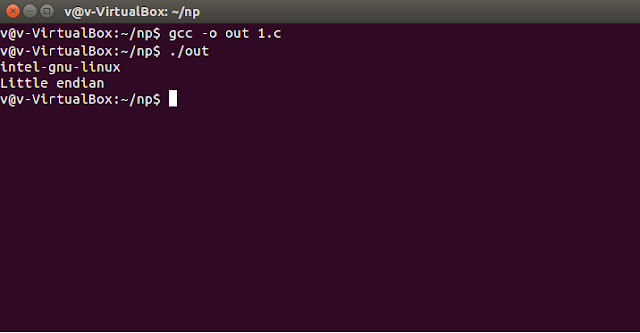Little or big endian
Think of computer memory as cells which are 1 byte long. In order to store 2 byte hex-data (90AB), there are two possibilities:
- Big endian: In this, you store the most significant byte in the smallest address. Examples include Motorola 68000 series, Xilinx Microblaze, SuperH, IBM z/Architecture or Atmel AVR32.
| Address value | Data |
|---|---|
| 1001 | 90 |
| 1002 | AB |
- Little endian: In this, you store the least significant byte in the smallest address. Example is Intel x86 and x86-64 series of processors, that’s why it is also known as Intel Convention.
| Address value | Data |
|---|---|
| 1001 | AB |
| 1002 | 90 |
Program to check whether data in your system is stored in little endian format or big endian format.
Here’s the code to test your machine’s endianness:
#include<stdio.h>
#include<stdlib.h>
#define CPU_VENDOR_OS "intel-gnu-linux"
int main()
{ union
{
short s;
char c[sizeof(short)];
}un1;
un1.s=0x0102;
printf("%s\n",CPU_VENDOR_OS);
if(sizeof(short)==2)
{
if(un.c[0]==1 && un.c[1]==2)
{
printf("Big endian\n");
}
else if(un.c[0]==2 && un.c[1]==1)
{
printf("Little endian\n");
}
else
{
printf("Unknown\n");
}
}
return 0;
}
Output: Intel processor, so output is little endian.

Written on May 3, 2016